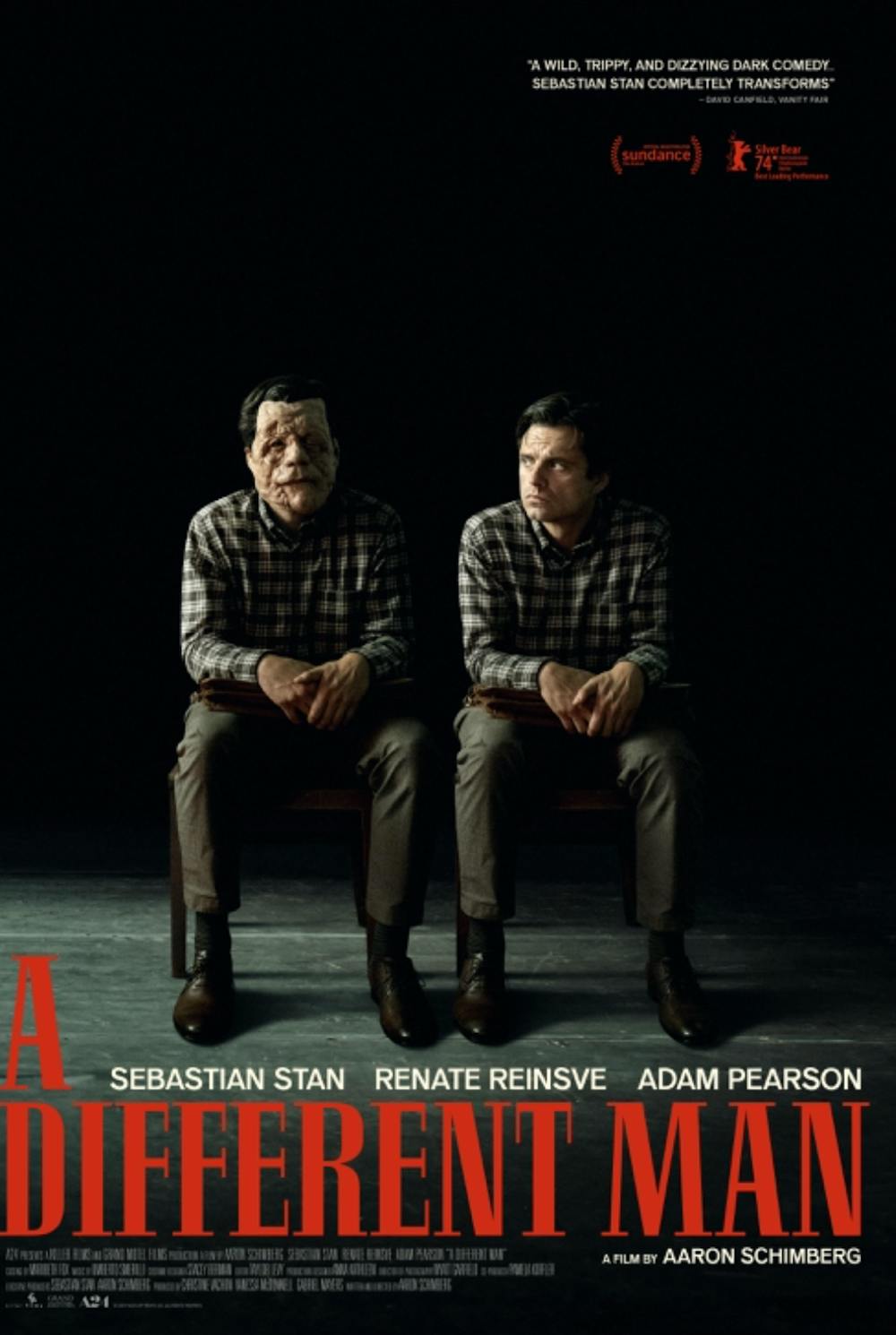By Andre Paras
Staff Writer
“A Different Man” is the new A24 film from Director Aaron Schimberg, which got its wide-theatrical release on Oct. 4. It’s his third feature film and his second about art and facial abnormalities. Even bigger than that, this film is a dramatized dive into masculinity and self-image.
After being treated to a whole life full of ridicule, Edward, an aspiring actor, gets a life-changing procedure done to better his appearance. However, when a new role he finds was made based on him in his past life that is taken from him, he’s sent into a spiral of insanity trying to recreate what once was.
Notably, this is Schimberg’s second time collaborating with Adam Pearson, a British actor with neurofibromatosis, a rare genetic order “at the extreme end of the severity spectrum” that causes tumors to grow on his skin, Pearson told NPR.
Along with acting, Pearson is known for his campaigns that create awareness and reduce the stigma against those with deformities. His first movie with Schimberg was “Chained for Life,” released in 2018, about a beautiful actress and a disfigured co-star, played by Pearson.
While “A Different Man” has lots of great critiques, it showcases them in some of the most absurd, unconventional and obscene ways, which is why a lot of it won’t land with general audiences. However, for me, this was a wild and inspired treat, with not much else to name like it.
The film opens without context, with Edward on a film set overacting a scene. We find out shortly, through a harsh cut to a satire spoof corporate workplace video, that Edward is type cast in these poorly made videos designed to be informative on his facial abnormalities, rather than the merit of his acting alone.
This cruel, but well-executed, joke sets the tone for the rest of the film’s humor. The film doesn’t hold your hand or really explain anything about where it's going, you just have to learn to accept the chaos of this universe.
In the beginning of the movie, Edward discovers a radical medical procedure he believes can solve all his problems, and this is where all the conflict begins. In order to get his dream face, Edward has to slowly rip off his old face over time, and these are the sequences where you’ll find all of the film’s gross body horror.
The camera does not shy away from the blood and gore, and whether or not you love or hate this movie, it’ll be hard to erase certain stills from your mind.
The whole procedure was reminiscent of a Frankenstein creation, and its color palette felt so intentional, as it did with the whole movie. Edward, in a solid orange jumpsuit, is prisoner to this procedure in an all-white room. This film was great at effectively using color theory, along with vivid tones for the audience, to focus on certain characters or props.
Without discussing where the plot goes afterward, this movie gets pretty meta, making commentary about events that have happened beforehand in the film.
Schimberg uses present-day New York City as the setting of this film, but with an eerie, bizarre nightmarish feel to it. It's a careful painting of Edward’s everyday hell-like life.
Despite being set in the present-day, the film’s look couldn’t feel any more like the 70s or 80s. It has distinct, colorful fashion choices from those decades as well as older musical selections, and was shot with film, preserving all the on-screen noise and grain that comes along with that.
The cinematography and editing styles also deviate from the conventions of today, with lots of optical zoom-ins and zoom-outs. Combined with this are harsh cuts between scenes that force you to follow intently with the film, or are used for dark comedic timing.
Some of it comes from aesthetic preferences and his own personality, but Schimberg aims to avoid modern technology like cell phones that could interfere with the story at hand, as he told the A.V. Club.
The film’s cast is led by Sebastian Stan, the former Marvel Cinematic Universe star, as Edward. Recently, he's been unafraid of diving into some embarrassing but nuanced roles in the art house film world.
The film comments on the idea of people creating stories generalizing the behaviors of those with deformities. It questions what is ethical and unethical when making art centered on these kinds of conditions. It even critiques audience’s reactions and media literacy to art focused on deformities, with people often having the wrong takeaways.
Finally, the film explores the dark world of a very insecure man, and how even with his dream appearance, he is being upstaged by a stranger, named Oswald, who is played by Pearson, with the same facial condition he once had. It lingers on Edward’s anxious looks in the mirror, and his perception of himself changing over time through experiences with women, friends and strangers.
As the film ends, you don’t know whether or not to feel bad for or laugh at Edward, a man now unhappy with everything he wanted in life. Through all of its commentary, its incredible cast of performances and through its artistic craftsmanship, I cannot keep this film off my mind for many great reasons.







